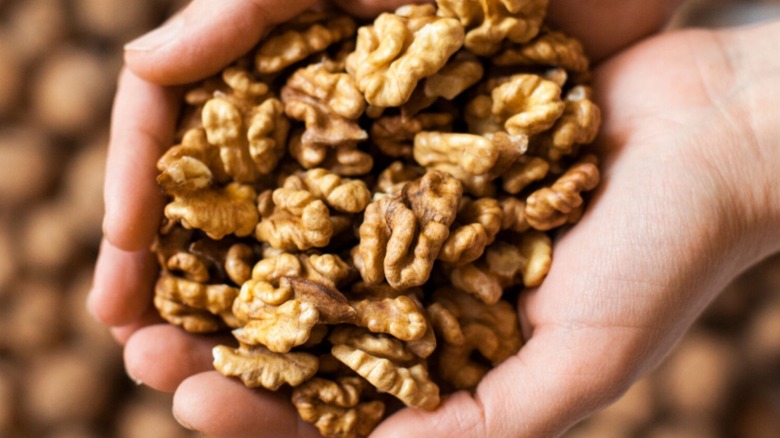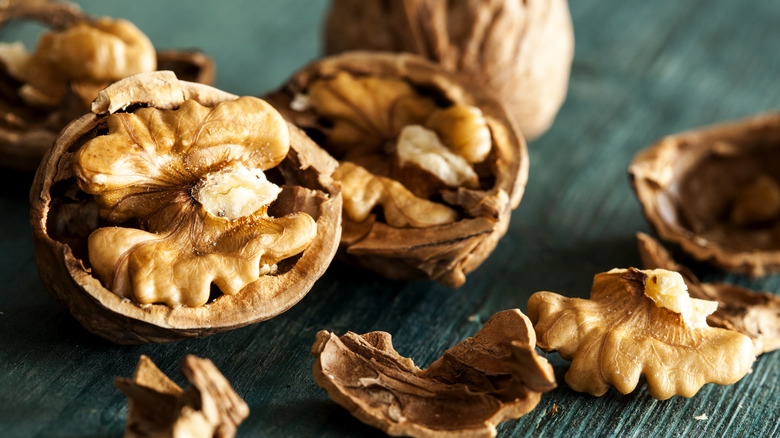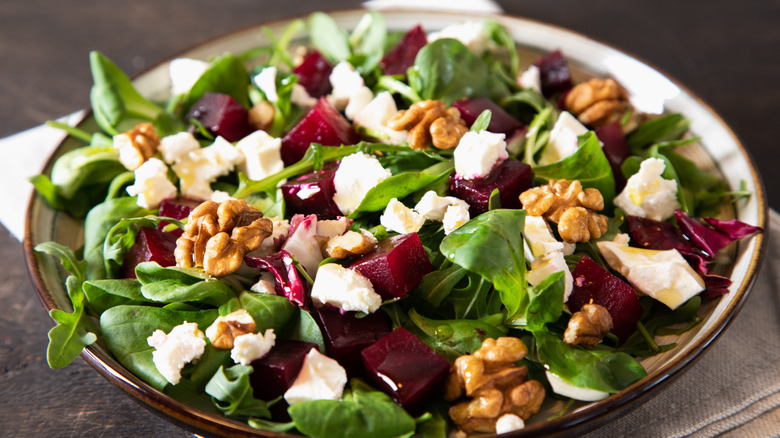The Easy Way To Tell If Your Walnuts Are Rancid
Walnuts are delicious when served raw straight from the shell or when roasted and salted as a delightful snack. They're also indispensable in many beloved dishes including classic banana walnut bread, the iconic Waldorf salad, and you can't have traditional Danish butterhorns without them. Walnuts have a buttery quality, and they're toasty with a touch of bitterness that helps balance sweet baked goods and complement savory dishes.
While walnuts are widely available all year round, and may not seem as delicate or susceptible to spoilage as fresh fruit and vegetables, all nuts do indeed have a shelf life. Walnuts, like other tree nuts, are technically fruits and are best used as close to their harvest date as possible. Once they turn rancid they have an unpleasant taste, smell, and texture — all of which will come through in your finished culinary creation.
Fortunately, there are some tell-tale sensory cues if you suspect your walnuts have turned: Softness rather than their signature snap, an unusually dark color, or a solvent-like smell. To get a read on whether your walnuts are ready to use or past their prime, it's helpful to understand what might cause them to become rancid in the first place.
What happens when walnuts go bad, and how to tell
There are a number of factors that contribute to the downfall of your walnuts: Among them, light, heat, and moisture. Walnuts have satisfying natural oils, which are part of what makes them so aromatic and tasty. That said, those oils can cause some problems for your walnuts, particularly in warmer environments. Higher temperatures have an effect on the chemical composition of the walnut's natural fats, and the result is the development of less-than-alluring qualities.
If you suspect your walnuts have turned, there are a few easy ways to gauge their freshness. Give them a press; fresh walnuts will be firm and not at all softened. At a glance, if you notice the normal signature ridges shrivel and wither, and that the color has darkened, this is a sign of oxidation and spoilage. Mold is also a red flag. You can use your nose to sniff out rancidity, too; a gone-bad walnut's aroma will be reminiscent of paint thinner (a chemical smell, similar to gasoline).
How to best preserve walnuts, and how to enjoy them
There are ways to preserve these natural treats so that you can enjoy them at their most optimal flavor and texture. When purchasing walnuts, you can find them in a number of forms: In-shell or shelled, and from there, you may find them whole, halved, in pieces, or even ground into a nut meal. Regardless of how you opt to take them home, the best-case scenario for storage is away from heat. When they're still in the shell, walnuts have a bit of natural protection, so it's less risky to keep them in a cabinet as long as it's cool and dark. You'll want to make sure they aren't exposed to moisture, either, as that element can promote mold growth.
If they're shelled or ground, you're better off stashing your walnuts in cold storage — either in the refrigerator or freezer. The former will keep them fresh for a few months, while the latter can protect your nuts' integrity for up to a year. In any case, it's a good rule of thumb to hold off processing your nuts (shelling, chopping, or grinding) until just before use. If you have any doubts about your walnuts' integrity, now you know how to follow your nose (and your other senses) to discern their freshness.


